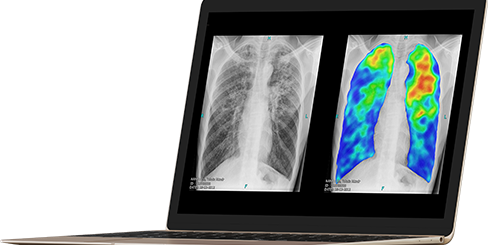
A Papua New Guinea study assessed the efficacy of CAD4TB (Delft Imaging), an AI tool for tuberculosis (TB) screening using chest X-rays of 7,970 participants. The AI system flagged 1,116 (14%) for abnormal findings. Follow-up testing identified 69 Xpert-positive TB cases, yielding a detection ratio of 853 per 100,000 screened, far exceeding the national estimated TB incidence of 432 per 100,000 for 2019. This study highlights CAD4TB's potential in high TB prevalence areas to identify cases likely missed due to mild symptoms or barriers to healthcare access.
Read full study
Evaluation of a population-wide, systematic screening initiative for tuberculosis on Daru island, Western Province, Papua New Guinea
BMC Public Health, 2024
Abstract
Background: A population-wide, systematic screening initiative for tuberculosis (TB) was implemented on Daru island in the Western Province of Papua New Guinea, where TB is known to be highly prevalent. The initiative used a mobile van equipped with a digital X-ray device, computer-aided detection (CAD) software to identify TB-related abnormalities on chest radiographs, and GeneXpert machines for follow-on diagnostic testing. We describe the results of the TB screening initiative, evaluate its population-level impact and examine risk factors associated with TB detection.
Methods: Through a retrospective review of screening data, we assessed the effectiveness of the screening by examining the enrolment coverage and the proportion of people with TB among screened subjects. A cascade analysis was performed to illustrate the flow of participants in the screening algorithm. We conducted univariate and multivariate analyses to identify factors associated with TB. Furthermore, we estimated the number of additional cases detected by the project by examining the trend of routine TB case notifications during the intervention period, compared to the historical baseline cases and trend-adjusted expected cases.
Results: Of the island's 18,854 residents, 8,085 (42.9%) were enrolled and 7,970 (98.6%) had chest X-ray interpreted by the CAD4TB software. A total of 1,116 (14.0%) participants were considered to have abnormal CXR. A total of 69 Xpert-positive cases were diagnosed, resulting in a detection rate of 853 per 100 000 population screened. 19.4% of people with TB had resistance to rifampicin. People who were in older age groups (aOR 6.6, 95%CI: 1.5-29.1 for the 45-59 age group), were severely underweight (aOR 2.5, 95%CI:1.0-6.1) or underweight (aOR 2.1, 95%CI: 1.1-3.8), lived in households < 5 people (aOR 3.4, 95%CI:1.8-6.6) and had a past history of TB (aOR 2.1, 95%CI: 1.2-3.6) were more likely to have TB. The number of bacteriologically confirmed TB notified during the intervention period was 79.3% and 90.8% higher than baseline notifications and forecasted notifications, respectively.
Conclusion: The screening project demonstrated its effectiveness with the high Xpert-positive TB prevalence among the participants and by successfully yielding additional cases of bacteriologically confirmed TB including rifampicin-resistant TB. The results and lessons learnt from the project should inform future TB screening initiatives in Papua New Guinea.